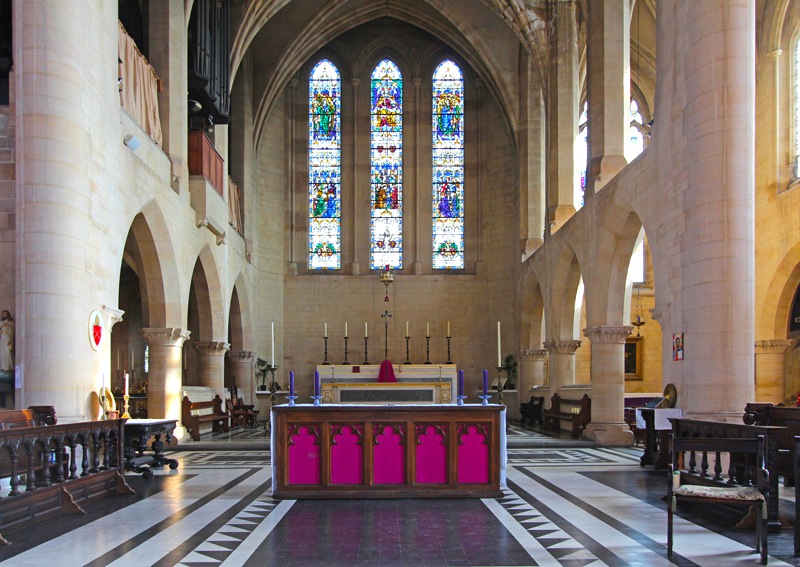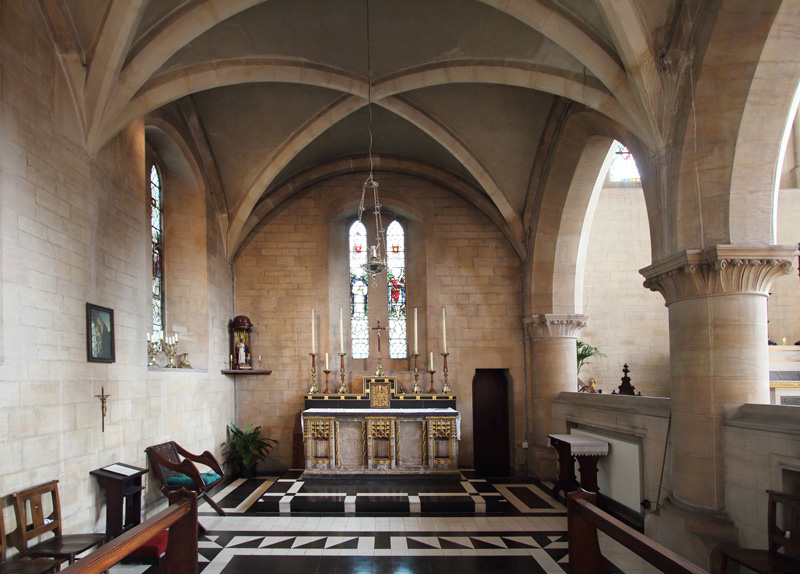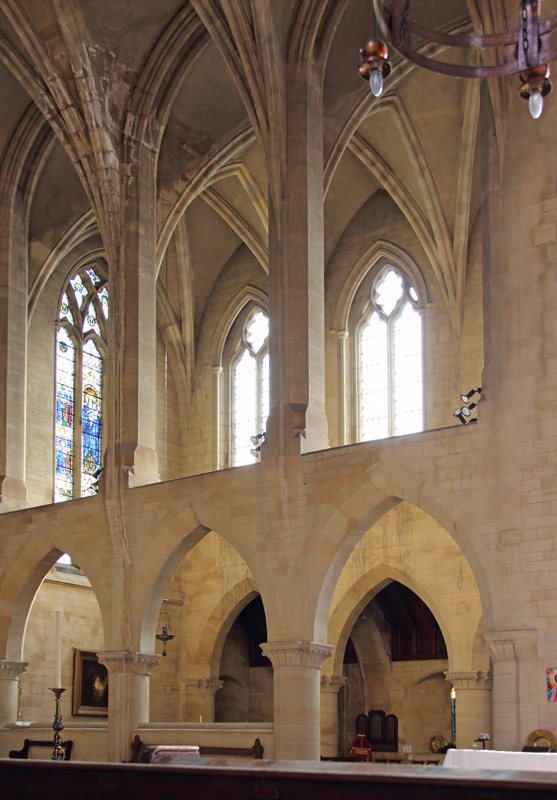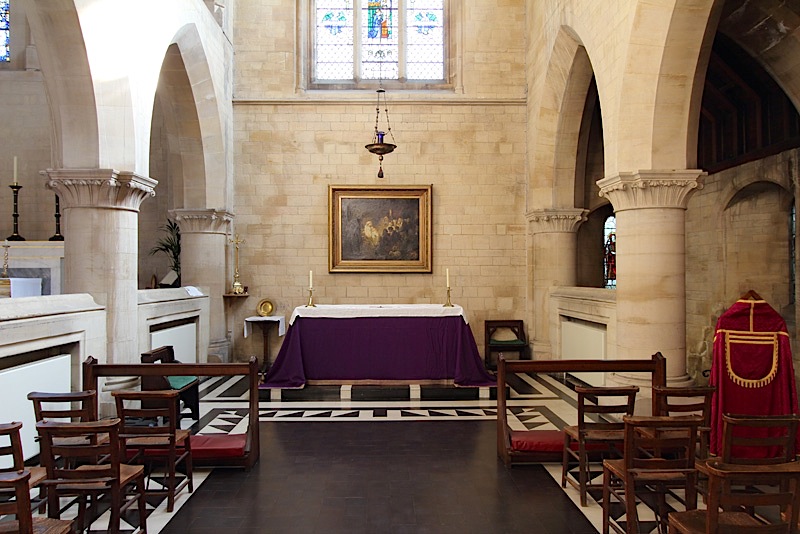Photographs by John Salmon. You may use the images without prior permission for any scholarly or educational purpose as long as you (1) credit John Salmon and (2) link your document to this URL in a web document or cite the Victorian Web in a print one. Click on the images to enlarge them.
The Nave and Aisles

Interior of All Hallows, Gospel Oak, by James Brooks (1825-1901). The main body of the church was built from 1892-1901: the nave was consecrated on 23 January 1901. The nave and aisles are separately roofed and divided by "arcades of columns with plain round shafts" (Roberts and Godfrey 140). The church was intended to be vaulted throughout and the the beginnings of the vaulting ribs can be seen at the top of the columns, going nowhere like the branches of pollarded trees. But even without being impressively canopied, this church like others by Brooks is "typically spacious and lofty" ("Mr Brooks's Churches," 108).



Left to right: Nave columns with the beginnings of vaulting ribs. (b) Looking into the north aisle. (c) Looking into the south aisle.
All Hallows is described as a "hall church" because the aisles are the same height as the naves (see Cherry and Pevsner 343).
East End

The Sanctuary, this part completed by Giles Gilbert Scott after Brooks's death, 1913-15.



Left to right: (a) The north chapel. (b) Looking into the south chapel from the sanctuary. (c) The south chapel.
The east end of the church, beyond the nave, must be credited to Scott, though the vaulting here gives an idea of what Brooks had wanted for the whole church. Brooks's biographer Geoffrey Tyack says nothing about the revision of the original plan, but it could be that the sanctuary and chapels are very much as Brooks had intended. They have none of the Byzantine splendour of some turn-of-the-century churches, nor do they have the embellishments that Brooks's assistant J. S. Adkins added to St John the Baptist, Holland Road after Brooks's death. Brooks himself relied on spatial drama rather than on decorative effects. The fine, geometrically patterned marble floor-tiling, and the splendid stained glass windows of the leading firm of church decorators at the time, James Powell & Sons, Whitefriars, would probably have pleased him very well.
Related Material
Sources
"History of All Hallows' Church" (Church website). Web. 26 August 2015.
Cherry, Bridget, and Nikolaus Pevsner. London 4: North. New Haven and London: Yale University Press, 2002.
"Mr Brooks's Churches." Architecture, Vol. 4. 20 August 1870: 108. Google Books. Free Ebook. Web. 26 August 2015.
Roberts, Sir Howard, and Walter H. Godfrey, eds. Survey of London, 1900. Vol. XXIV. Part IV. London: London County Council; London Survey Committee; Joint Publishing Committee Representing the London County Council and the London Survey Committee, 1900. Internet Archive. Contributed by Robarts Library, University of Toronto. Web. 26 August 2015.
Tyack, Geoffrey. "Brooks, James (1825–1901), architect." Oxford Dictionary of National Biography. Online ed. Web. 26 August 2015.
Created 26 August 2015